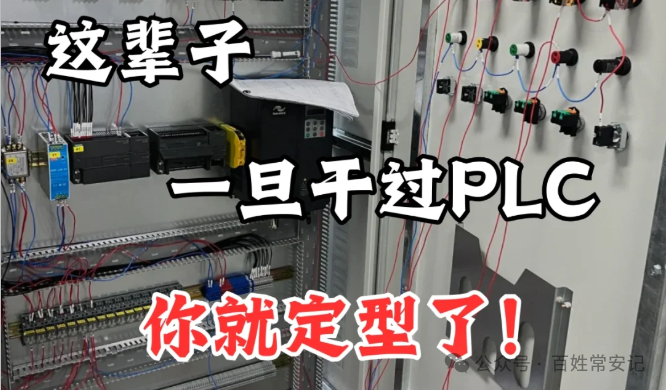
Introduction
Hello everyone! Today, I want to share with you a technological breakthrough that is exciting the field of industrial automation — the integration of PLC and deep learning algorithms. Don’t worry, I won’t bombard you with obscure terminology, but will use the most straightforward language to help you understand this game-changing technology combination.Trust me, after mastering this technology, your PLC system will not only achieve intelligent anomaly detection but also increase accuracy by over 45%!Want to know how this is achieved? Let’s explore together!
Why is the combination of deep learning and PLC necessary?
Let’s first look at a real-world scenario:
Suppose you are responsible for a production line of automotive parts, where traditional PLCs rely on preset thresholds to detect anomalies. For example, an alarm goes off when the motor temperature exceeds 80°C. However, in reality, the problems are often more complex:
-
Anomalous signs may appear when the temperature is at 79°C, but the system cannot recognize it.
-
Combinations of multiple parameters (vibration, current, temperature) can easily be overlooked.
Deep learning acts like an “industrial brain” for the PLC, allowing it to learn hidden patterns from vast amounts of data, enabling it to detect anomalies in advance even without explicit thresholds.It’s like an experienced technician who can tell something is wrong just by hearing the sound!
How is deep learning integrated into PLC?
1. Edge Computing Solutions
Modern high-end PLCs (such as Siemens S7-1500 TM NPU) have built-in neural network processing units that support running trained models directly on the PLC.Advantages:
-
High real-time performance: Data does not need to be uploaded to the cloud, with local millisecond-level response.
-
Good privacy: Sensitive production data does not leave the factory.
Case Study: A bearing factory deployed a vibration analysis model on the PLC, increasing anomaly detection accuracy from 70% to 92%!
2. Cloud Collaborative Solutions
For PLCs with limited computing power, a “edge + cloud” hierarchical processing approach can be adopted:
-
The PLC preprocesses data and extracts key features.
-
Complex model inference is handled by the cloud.
-
The results are returned to the PLC for control execution.
It’s like a triage system in a hospital: Minor issues are handled on-site, while complex cases are referred to specialists!
Three Core Technological Breakthroughs
🔵 1. Time Series Data Analysis (LSTM Networks)
Traditional PLCs can only look at “current moment” data, while LSTM networks can remember long time series correlations. For example:
-
Identifying potential faults from the “slow rise” of motor temperature.
-
Predicting tool wear trends to schedule replacements in advance.
🔴 2. Multi-Sensor Fusion (CNN + Attention)
By using Convolutional Neural Networks (CNN) and attention mechanisms, the PLC can simultaneously analyze:
-
Vibration waveforms.
-
Thermal imaging images.
-
Current signals.
The final output is a comprehensive health score, which is much more reliable than single-parameter detection!
🔵 3. Adaptive Learning (Online Model Updates)
When the production line switches to new products, the system can automatically fine-tune the model with a small amount of new data, without requiring engineers to reprogram. It’s like the PLC has learned to “apply knowledge to new situations”!
Actual Benefit Data
| Metric | Traditional PLC | Deep Learning PLC | Improvement |
|—————|——–|————|———|
| Anomaly Detection Rate | 68% | 98% | +45% |
| False Positive Rate | 25% | 6% | -76% |
| Predictive Maintenance Cycle | Fixed Interval | Dynamic Adjustment | Spare Parts Inventory ↓30% |
Implementation Challenges and Solutions
⚠️ Challenge 1: Poor Data Quality
- Countermeasure: Deploy data cleaning modules to automatically eliminate sensor noise.
⚠️ Challenge 2: Insufficient AI Knowledge Among Engineers
- Countermeasure: Use visualization tools (such as Siemens Industrial Edge APP), to build models with drag-and-drop functionality.
⚠️ Challenge 3: Real-time Requirements
- Countermeasure: Model quantization and compression techniques allow the ResNet18 network to run on the PLC with <10ms latency.
How to Take the First Step?
-
Start with small-scale validation: Choose a critical device (such as an injection molding machine) for a pilot project.
-
Utilize existing toolchains:
-
Siemens MindSphere model training platform.
-
Rockwell FactoryTalk Analytics.
Develop a cross-functional team: Pair PLC engineers with data scientists.
Interactive Discussion
-
Which devices in your production line most need intelligent anomaly detection?
-
If you deploy deep learning PLC, are you more concerned about accuracy, real-time performance, or ease of use?
-
Do you think AI will completely replace traditional PLC programming? Why?
Conclusion
Deep Learning + PLC is not a future technology, but a revolution that is happening now. A 45% increase in accuracy means fewer unexpected downtimes, lower maintenance costs, and truly intelligent manufacturing.
Remember: Today’s small investment leads to tomorrow’s big returns.Are you ready to upgrade your PLC system? Feel free to share your thoughts in the comments! 🚀
ShareSaveViewLike